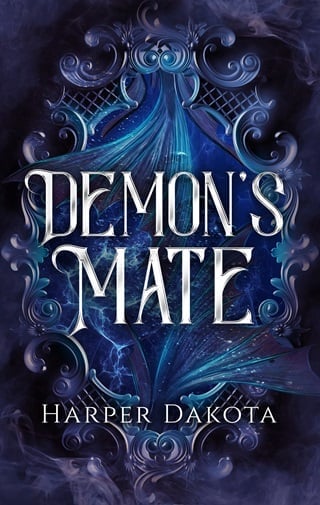Chapter 15
CHAPTER 15
“I don’t get why you talked to my mother without me,” says Maddy.
“I’m trying to get a complete picture of what got you here,” says Dr. Weaver.
Dr. Ann Weaver sits on a leather chair in front of her desk opposite Maddy and Maddy’s mother, who are positioned next to each other but on opposite ends of a sofa. Dr. Weaver has long ash-colored hair pulled into a single thick braid down her back. Her face is clean and makeup-free, a Dove soap ad for older women. Laugh lines bursting from the outside corners of her bright brown eyes even when her face is impassive lend to the impression that Dr. Weaver remains quietly pleased no matter what Maddy says or does. She wears no jewelry but for a gold wedding band and a green silicone wristband, the kind people wear in support of some kind of cause, but Maddy can’t make out the lettering.
A low, modest coffee table adorned with a box of tissues and a Birds of New England photography book lies between them. The room is bright, sunlit through two large windows behind Dr. Weaver’s desk. A floor-to-ceiling bookcase occupying the length of the wall to the left is crammed with textbooks and an occasional framed picture. A tall potted leafy plant sits in the corner. It looks real, but maybe it isn’t. Maybe none of this is real.
The room feels as if they could be in a professor’s office at NYU. That a door within this hospital could open into a space so warm and normal when all other doors lead to rooms inhabited by a mixed bag of addicted, suicidal, twitchy, volatile, mute, mumbling, dead-eyed, bed-headed, slippered inmates monitored and medicated by a rotating staff of apathetic rule enforcers feels like a magic trick. Welcome to Narnia. She studies Dr. Weaver’s face, unsure of whether she’s dealing with Mr. Tumnus or the White Witch.
“You think I’m lying to you,” says Maddy.
“No, but often people don’t remember everything that happened. And some of what you do recall will probably feel a bit confusing and embarrassing now, and in my experience, people are understandably reluctant to share every chaotic detail with a doctor they don’t know yet.”
Maddy scratches at what’s left of the Blame It on Rio red nail polish on her right thumbnail. The shape of what remains looks like the outline of a state, one of the squarish ones somewhere in the middle. Her lack of US state geography knowledge is embarrassing.
“It feels like you’re ganging up on me.”
“No one is ganging up on you,” says her mother.
Once again, the sweet optimism in her mother’s voice gallops in late and forced, failing to believably uplift the panicked melody of everything she says. Her mother is wearing a camel-colored cashmere turtleneck sweater paired with cream-colored slacks and heels, soft makeup, her hair blown out, nails manicured, her Gucci bag displayed by her hip. Maddy is wearing the threadbare Vanderbilt sweatshirt Emily gave her four years ago, black leggings, and white fuzzy bunny slippers. Her nails are chewed, her chin and forehead broken out, her hair oily. She can’t remember when she last washed it. They couldn’t appear more different, and Maddy wonders if her mother dressed with that intention, communicating through her pressed pants and glossy hair that whatever is messed up about her daughter couldn’t have come from her.
“We’re all in this together,” says Dr. Weaver. “The better I understand what happened, the better I’ll be able to help you.”
Maddy sighs. She came to this meeting with only a dollar’s worth of energy in her pocket to spend, and she’s already down to her last nickel.
“Tell me about your sleep. During the time you were feeling lots of energy, how much sleep were you getting?”
“Not much.”
“Do you remember about how much a night?”
“Two, three hours.”
“Would you wake up tired?”
“No.”
“Were you taking any stimulants like cocaine, amphetamine, Adderall?”
“No.”
“Were you talking faster than usual?”
“I don’t think so.”
“A thousand miles an hour,” says her mother.
“Were you texting people all night?”
Her mother is nodding.
“Were people telling you to slow down?”
“I don’t think so.”
“We all were,” says her mother.
“Amy, I’m looking for Maddy’s perspective here, okay?” Dr. Weaver pauses, then turns back to Maddy. “Did you spend an excessive amount of money?”
The blazers. The shoes. This question feels rhetorical and planted. Her mother must’ve already ratted her out. Maddy’s horrified by how much she charged, and she should definitely be in big trouble and on some kind of repayment plan with her mother and Phil for doing so, but since when does an exorbitant shopping spree land a person in a mental hospital?
“Yeah.”
“Did you have sex more often or with more partners than you normally do?”
She remembers Max at the comedy club. Then there was another dude. She can’t remember his name. And a couple of random blow jobs. Images flash through her mind, a pornographic slideshow. She cheated on Adam. So many times. She can’t believe she did that. She can barely confess this disgusting truth to herself, never mind to this doctor, in front of her mother.
“No.”
And Adam. How will she ever tell him? Any of it. Does he know she’s here?
“Did you start any new projects or hobbies?”
“Not really.”
“Did you write a comedy special for Netflix?”
“Oh.”
She forgot about that. She did write a one-hour comedy special. She had a contract with Netflix. But how would that have happened? That doesn’t make any sense.
“Do you believe Taylor Swift asked you to write her memoir?”
She hears the absurdity in the question. It felt so true and real at the time, but now, slumped on this sofa, in this medicated aftermath, hearing the words spoken aloud by a psychiatrist in a mental hospital, it can only feel crazy. She holds her confused head in her hands and stares down at her fluffy slippers.
“I guess not.”
“Let’s go back to before you started taking the antidepressant. How long had you been feeling depressed?”
“I guess since the beginning of the school year.”
“Had you ever experienced low periods prior to this?”
“Pretty much all last year.”
“She had just gone through a breakup and had a hard time adjusting to college,” offers her mother.
“How about before last year?”
“No,” says Maddy.
“Before college, she was always a normal, happy kid,” says her mother.
“Can you tell me about the marks on your arms?”
Maddy clamps her mouth shut and swallows. She pulls her hands into the long sleeves of her sweatshirt, crosses her arms, and focuses her blunted gaze upon the blue heron on the cover of the coffee table book. She wasn’t prepared to be outed without warning, to hear her dirty little secret spoken aloud so brazenly, in front of her mother. Maybe her mother had already seen the scars on her arms, but there was the possibility that she hadn’t. Maddy wants to cry, but she’s too sedated, and her eyes remain tearless. Her mother, on the other hand, leans forward, pulls a tissue from the box, and dabs the inside corners of her eyes, careful to preserve the integrity of her makeup.
“Did you cut yourself when you were feeling depressed?”
Without looking up, Maddy nods.
“Did you ever try to kill yourself?”
“No,” she says quietly but as clearly as she can.
“Have you ever thought about killing yourself?”
“No,” she lies.
“Okay,” says Dr. Weaver, nodding, then taking a moment before speaking again. “Based on the report from the ER and this assessment, everything is consistent with a diagnosis of bipolar disorder.”
Dr. Weaver sits in silence, her crinkled eyes delighted with this pleasant conversation. Wait, what did she just say? Maddy’s head goes fuzzy, a rural radio station lost to static.
“I don’t understand. How can you say that?” demands her mother. “Her brain scan was normal.”
“I’m afraid brain scans aren’t able to detect bipolar disorder. The scan was done to rule out the possibility of brain injury or a tumor. Fortunately, we didn’t find any.”
“But all teenagers are moody. They get depressed. That’s normal,” says her mother.
“You’re forgetting the manic episode,” Dr. Weaver points out.
Her mother shakes her head, her sodden tissue strangled in her fist.
“I think she was on drugs,” her mother says.
“I wasn’t on drugs.”
“Maybe someone slipped you something.”
“That wouldn’t explain her behavior for weeks,” says Dr. Weaver. “And her tox screen was clean.”
“But if you have no physical proof, how can you know what it is?” asks her mother.
“You’re right. There’s nothing we can detect in her brain, no blood test for bipolar.”
“So this is all based on what, then? Your opinion?”
Dr. Weaver clasps her hands in her lap, in no hurry to offer a response.
“You’re welcome to get a second opinion, but I’ve been doing this a long time. She has textbook bipolar I. I understand this is a lot to process.”
She’s bipolar. That word gets thrown around without a medical license all the time, mostly by boys to describe girls as crazy. It’s a derogatory dart meant to demean and dismiss its target. But those boys aren’t doctors, and Dr. Weaver isn’t hurling names.
“I don’t understand. How did this happen to her?” her mother asks. “What caused this?”
“The antidepressant most likely triggered the manic episode.”
“So the medication caused this.”
“No, it unmasked a disorder that was already present in her brain.”
“But if she hadn’t taken the Celexa, then she wouldn’t have done all those crazy things and we wouldn’t be here?”
Maddy appreciates that her mother keeps asking good questions because she can’t. Her mother is a detective searching for suspects, a lawyer looking to get her client off. An animal gnawing its way out of a trap.
“That’s probably true. But she’d still be depressed, cutting herself, possibly suicidal.”
“She said she wasn’t suicidal.”
Let the record show.
“Something else would likely have come along to trigger a manic episode. Or it could’ve happened spontaneously. There is a physiology to this illness, just like diabetes or heart disease. And we have treatments I want to talk about. But first I want to check in with Maddy. How are you doing with this?”
The conversation stops. The room goes silent. Maddy tries to pinpoint a feeling, to chase down an appropriate string of words. She stares at Dr. Weaver, blank-faced and far away.
“You might already be in a depressive episode. It’s common for people to cycle into a depression after mania. But we might just be seeing the sedating effects of the meds you’re on now. I imagine you’re also feeling a bit confused and stunned.”
Her mother takes another tissue from the box.
“I’d like to get you on a mood stabilizer. The antipsychotic we have you on is very effective at bringing down the mania, and the benzodiazepine knocked you down, too, but I want to taper you off those. I’m going to leave your birth control implant alone, even though the hormones in it can increase your risk of an episode. But let’s keep that in the back of our heads for now.
“This is a disease of instability. We want to balance your mood and prevent future recurrences of both mania and depression. The mood stabilizer I want to try you on is lithium. It does a better job at preventing mania than depression. The highs are actually easier to treat than the lows. If we find we need to, we can add another mood stabilizer with antidepressant properties once you’re established on lithium and it won’t cause you to swing manic.”
“So she has a lithium deficiency?” her mother asks.
“No.”
“Then what is it doing? How does it work?”
“We don’t really know, but we know that it does. Lithium is fifty percent better than a placebo at preventing mania and twenty-two percent better than placebo at preventing depression. And it reduces the risk of suicide by eighty-seven percent.”
Each time Dr. Weaver says the word suicide , her mother’s face recoils and her mouth tightens, as if she’s taken a swig of vinegar and she’s recruiting every New England good manner she owns to keep her face from revealing her displeasure while she swallows it. After a long moment, her mother recrosses her legs and clears her throat.
“Is it addictive?”
“No, but it has a therapeutic dosage window. Too low and it won’t work. Too high, you risk toxicity to the kidneys. We’ll check her blood levels about every three weeks for the first few months to make sure she’s getting the highest possible therapeutic dose without going toxic.”
“What does that mean? What happens if she ‘goes toxic’?”
“Signs of lithium toxicity would be things like an extreme hand tremor, blurry vision, slurring speech, severe diarrhea, nausea and vomiting, mental confusion. But we’re not going to let that happen.”
“How long does she have to take it for?”
“This isn’t like a sinus infection, you take a course of antibiotics, the infection goes away, and you stop taking the medication. This is more like diabetes. It’s a chronic illness, something she’ll have to deal with for the rest of her life. But for now, let’s just think about these first six to twelve months. The goal is to decrease the severity, duration, and number of episodes she’ll experience.”
For the rest of her life . She’s not able to absorb everything Dr. Weaver and her mother are saying, but that phrase gets in, taking center stage in her mind, echoing its fateful cry off the inner walls of her skull. She remembers wanting a tattoo when she turned eighteen, a small daisy on her left shoulder, but her mother talked her out of it. What if you don’t like it in ten years? Trust me. You don’t want to make decisions when you’re young that you’ll be stuck with for the rest of your life.
She’s barely a real person, not old enough to legally buy beer or rent a car. Only a toe into adulthood, her frontal lobe not fully developed, she still thinks of herself as a kid, still calls herself a girl, and imagines it’ll be years before she could ever comfortably refer to herself as a woman. She’s still forming, deciding who she is. She hasn’t even declared a major. She hasn’t chosen anything yet.
But this chose her. Without her consent, like an arranged marriage, till death do they part. She wants an annulment, a divorce, an open window onto a fire escape, a new doctor, a time machine. Some way out of this.
“When can I go back to school?” Maddy manages to ask.
“You’re going to need to take the rest of this term off. You’ll need the time to get fully stabilized. They’ll give you a medical leave of absence. These next few weeks plus winter break might be enough to get you back for second semester. Let’s see how you do.”
Dr. Weaver waits. Maddy’s mother clenches her teeth and squeezes her eyes shut, an expression Maddy recognizes as her mother trying not to cry. She blinks her eyes open, and a couple of tears escape, rolling down her face. Ready with her tissue, she mops them up and blows her nose.
“In addition to medication, Maddy, there is a lot you can do to help keep your mood stable. Changes in sleep, routine, time zone if you travel, change of season, stress, these can all impact mood and potentially cause you to swing outside of a healthy range. A single night of sleep deprivation can trigger mania. So you’ll want to place a high priority on sleep and managing stress.
“You’ll both want to keep an eye out for any telltale signs that Maddy’s mood is shifting. Signs of ramping up into mania might be needing less sleep, talking really fast—what we call ‘pressured speech’—spending too much money, talking about comedy or Taylor Swift. Indications that you’re sinking into a depression might be sleeping too much, losing interest in activities you normally enjoy, pessimistic thinking, cutting. If you or anyone in your inner circle notices any of these things, or if you’re worried for any reason, I want you to call me. Any time, day or night. You’ll have my cell. We’ll want to adjust your medication and try to keep you from swinging too far in either direction.”
Dr. Weaver stops, checking the temperature of the room. Maddy’s mother blows her nose again. Her makeup is still in place, but her face looks wrung out, older than it did an hour ago.
“I know this is a lot,” says Dr. Weaver. “I’m sure you’ll have more questions as it all sinks in.”
“I just want everything to go back to normal for her,” her mother says, her voice choked and weepy.
“We’ll work together to find the right strategy and support she needs to keep her stable,” says Dr. Weaver, her merry eyes dancing from Maddy’s mother to Maddy. “And if Maddy stays committed to her treatment plan, there’s no reason why she can’t lead a normal life.”
When Maddy was growing up, being normal was always the unquestioned goal, and thankfully, it was always within reach. Normal was her default, unexamined way of life. It meant fitting in, blending with the colors, sounds, and shapes around her. When Sofia and all the other girls wore rainbow loom bracelets and Uggs and baggy shirts knotted in the back with a hair elastic, so did she. When everyone got iPods, she got one, too. She was a fashion and consumer lemming, happily jumping off whatever cliff the other girls leaped off. Acceptance and belonging were the gifts that came with going along with the pack.
And being normal as a kid, and especially as a teenager, meant possessing the keys to life’s kingdom. But ever since Maddy began college, while traversing that privileged bridge between childhood and adulthood, normal has lost a lot of its shiny gold-sticker appeal. From what she’s observed, a normal life for grown-ups feels like an invitation to a party she doesn’t especially want to go to. It almost feels like a trick, and everyone attending is a fool. Being a normal adult means she’s supposed to work at least forty hours a week for at least the next forty years, continue to wear the right clothes, drive the right car, get married, have kids, buy an enviable house in the right zip code, and if she does normal really well, become a member at a country club like Pine Meadows. For the rest of her life. Just like her mother. Just like Emily.
But now she’s in a mental hospital. She’s bipolar. Mentally ill. Crazy. She imagines her bridge from childhood to adulthood crumbling on either side of where she stands, leaving her stranded in the middle, neither here nor there, nowhere. The invitation requesting her presence at a normal life has been rescinded. In its place, she’s been invited to an abnormal life, the box for WILL ATTEND already checked, leaving her no choice.
 Fullepub
Fullepub 



